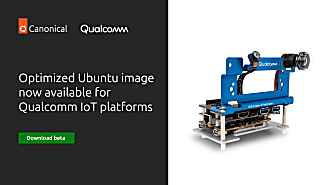Canonical
on 5 October 2016
Software defined networking is critical in big software

Although many businesses are moving towards digitization and automation, IT is not keeping pace. Moreover, many IT departments are undertaking these challenges with the approaches, processes, and tools developed over a decade ago. They are still manually configuring their systems, thereby creating a significant risk for downtime. By some estimates, over 70% of network failures are due to human error.
Today, SDN is more than just a way to use software to automate networking operations. SDN has evolved to include modeling, orchestration, and have become declarative. Meaning, software is performing many of the tasks and underlying processes that were once manual functions, thereby reducing risk and improving efficiency.
Telecoms & SDN
Many in the industry confuse SDN with Network Function Virtualization (NFV). Telecoms use NFV to accelerate the development and deployment of network services sometimes called virtual network functions (VNFs). Whereas, SDN uses software to centralize the control of the overall network.
Traditionally telecoms would deploy network fabrics to deliver high-performance, low-latency solutions to converge compute, storage, and software resources within their data or operations centers. SDN is largely used as a programmable abstraction layer tied to the needs of the applications to ensure performance, throughput, and accuracy.
Some of the main benefits Telecoms receive from deploying SDN include:
- Faster ability to enhance security while adjusting to keep up with server, storage, and compute changes. Using SDN, administrators can provision security controls for workloads. Further, SDN allows for the ongoing monitoring, management, regulatory, and compliance across all clouds – hybrid, public, private, or heterogeneous networks. End-to-end software-based Infrastructure as a Service solutions. Organizations can deploy software based IaaS solutions faster and with more reliability. SDN makes it easy for administrators to ensure interoperability between IaaS services with NFV.
- Deliver more services without increasing supporting infrastructure. Because SDN is a controller, separating control functions from data functions. SDN can optimize the network, telling devices and applications where to direct or send packets if the network, or any device on the network, becomes bogged down due to heavy traffic. This allows for optimized network packet delivery based on existing constraints of the infrastructure.
- Extend the data center to support more services, compute, IoT, and BYOD. The introduction of new devices like cellphones, laptops, energy meters, tablets, etc. increase the number of potential network attack vectors for viruses or malware. Further, one single data or privacy breach can expose an organization to tremendous backlash from the public, shareholders, and the media. SDN has the capability of enhancing an organization’s security profile by automating policy-driven traffic shaping, consistent enforcement across disparate devices, and litmus/limitations based on user access, data type, device, or application.
- “Centralized management” and provisioning tools for deploying network resources. One of the key promises of SDN is the ability to have one single-pane of glass for managing networks. While that many not be the case today, SDN does offer many of the management tools and automation to help admins centrally manage and untangle network bottlenecks. Further, admins are able to optimize network flow far faster than with traditional methods.
With the emergence of orchestration and modeling solutions, combined with advances in cloud migration and deployment tools, we are quickly moving into a world where applications, services, storage, and compute will simply declare their requirements. SDN and/or other management solutions will simply spin-up the necessary network requirements to bring these services to life allowing admins to focus on what they do best. This is the era of Big Software.
For more information about Canonical’s vision regarding NFV or SDN, please download the CIO’s Guide to NFV and SDN.



